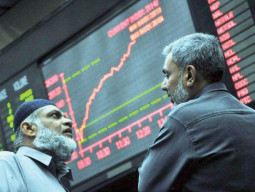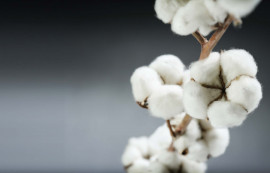
However, political tensions between two of the largest members, Pakistan and India, have plagued SAARC ever since its inception. Recent events on the Pakistan-India border have forced the cancellation of the 19th SAARC Summit scheduled to be held in Islamabad in November. With recently imposed restrictions on cross-border exchange of artists, exhibition of movies and participation in cultural activities, other economic activities such as import and export of goods between the two countries risk being curtailed as well. Political tensions and uncertainties have economic consequences.
The article will investigate what trade relations the two countries have enjoyed thus far to gain an insight into what possible effects derailment of their relations will have. Going back to 2004, when political tensions had receded, Pakistan and India embarked upon initiatives to increase trade and consequently improve regional integration. The following analysis is conducted using data from Trademap.org and COMTRADE.
Before 2004, there was minimal movement of goods between Pakistan and India. Although, India had awarded Pakistan the Most-Favoured Nation (MFN) status in 1996, the exports from Pakistan to India remained almost negligible for a number of years.
Pakistan’s exports to India were $84 million in 2003 and even at their peak in 2013, managed a modest $403 million, after which they receded to $312 million in 2015. On the other hand, the imports increased rapidly in absolute terms as trade relations moved towards normalisation. It increased from $184 million in 2003 to $2.18 billion in 2013. It was at $1.96 billion in 2015.
The trade deficit for Pakistan - the difference between the imports from India and exports to India - was more than five times the value of the exports from Pakistan to India in 2015.
Informal trade
Furthermore, researchers at ICRIER (Indian Council for Research on International Economic Relations) estimate the value of informal trade between Pakistan and India via third countries at $4.71 billion, which is twice the amount of formal trade between the two countries. The informal exports from Pakistan to India are mainly in textiles and dry fruits, whereas informal exports comprise of jewellery, textiles and machinery parts. Pakistan maintains a negative list of 1,209 items, which cannot be legally imported from India. Both countries maintain a sensitive list (as is common with other SAARC member countries), which limits the provision of trade concessions on the enlisted products. Informal trade circumvents such restrictions on trade.
Trade composition
India exported $263 million worth of vegetable products, $340 million worth of chemical products, and $837 million worth of textile products to Pakistan in 2015 through formal channels. On the other hand, Pakistan exported $77 million worth of vegetable products, $62 million worth of mineral products, $61 million worth of textile products, $20 million of base metals and $14 million worth of medical instruments in 2015.
In terms of total value of goods exported from India, Pakistan ranked in the top five destinations for several products such as powdered milk, tomatoes, peas, coconuts, polypropylene, raw cotton, polyester staple yarn, synthetic woven fabric and imitation jewellery. Similarly, India is an important destination for Pakistani exports of fresh and dried dates, gypsum, portland cement, tanned leather, raw cotton, woven denim fabric, waste and scrap of different metals, and medical and surgical instruments.
More than 80% of the goods traded in both directions are either raw materials or intermediate goods. The share of consumer goods is minimal. Therefore, bulk of the goods traded between the two countries are primary goods and unfinished goods which require further conversion into finished goods within the trading partner before being sold as finished goods.
Barriers to trade
The analysis of tariff data from World Integrated Trade Solution (WITS) suggests that Pakistan imposes lower import-weighted average tariff rates on the imports of Indian products than the import-weighted average tariff rates imposed by India on the imports of Pakistani products.
The analysis of data on non-tariff measures from UNCTAD and World Bank suggests that India imposes higher technical barriers to trade on the imports of textiles and agricultural goods amongst other goods. Additionally, India has multiple certifying agencies involved in the process of implementing the non-tariff measures. It is likely that procedural obstacles and administrative delays related to the implementation of non-tariff measures result in impeding the imports into India from Pakistan.
Pakistan has an expanding consumer market and multiple free-trade agreements are expected to be negotiated. According to the State Bank of Pakistan, the Consumer Confidence Index is at one of its highest levels. The private consumer spending is expected to increase by 7% in FY16 compared to growth of 3.2% in FY15.
Planned infrastructure investments in Pakistan, too, are likely to promote industrial growth and will consequently lead to greater demand for raw materials and intermediate goods.
However, temporary restrictions on economic activities between Pakistan and India can have a long-term impact on the trading pattern between Pakistan and India as firms and businesses involved in trade between the two countries seek alternative options due to the escalating hostilities.
The writer is an Assistant Professor of Economics & Research Fellow at CBER, IBA
Published in The Express Tribune, October 29th, 2016.
Like Business on Facebook, follow @TribuneBiz on Twitter to stay informed and join in the conversation.



1730959638-0/trump-(19)1730959638-0-165x106.webp)













COMMENTS (3)
Comments are moderated and generally will be posted if they are on-topic and not abusive.
For more information, please see our Comments FAQ